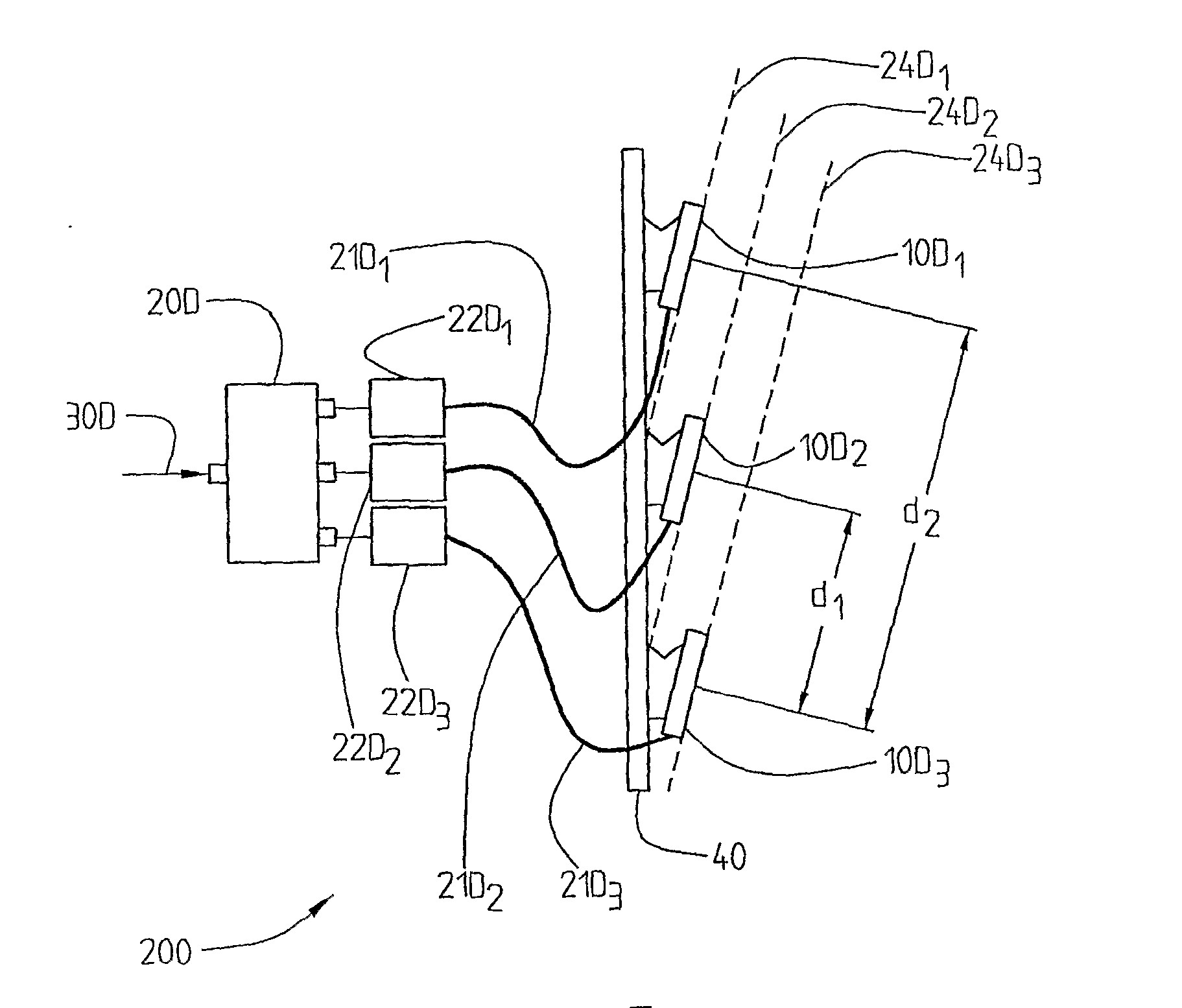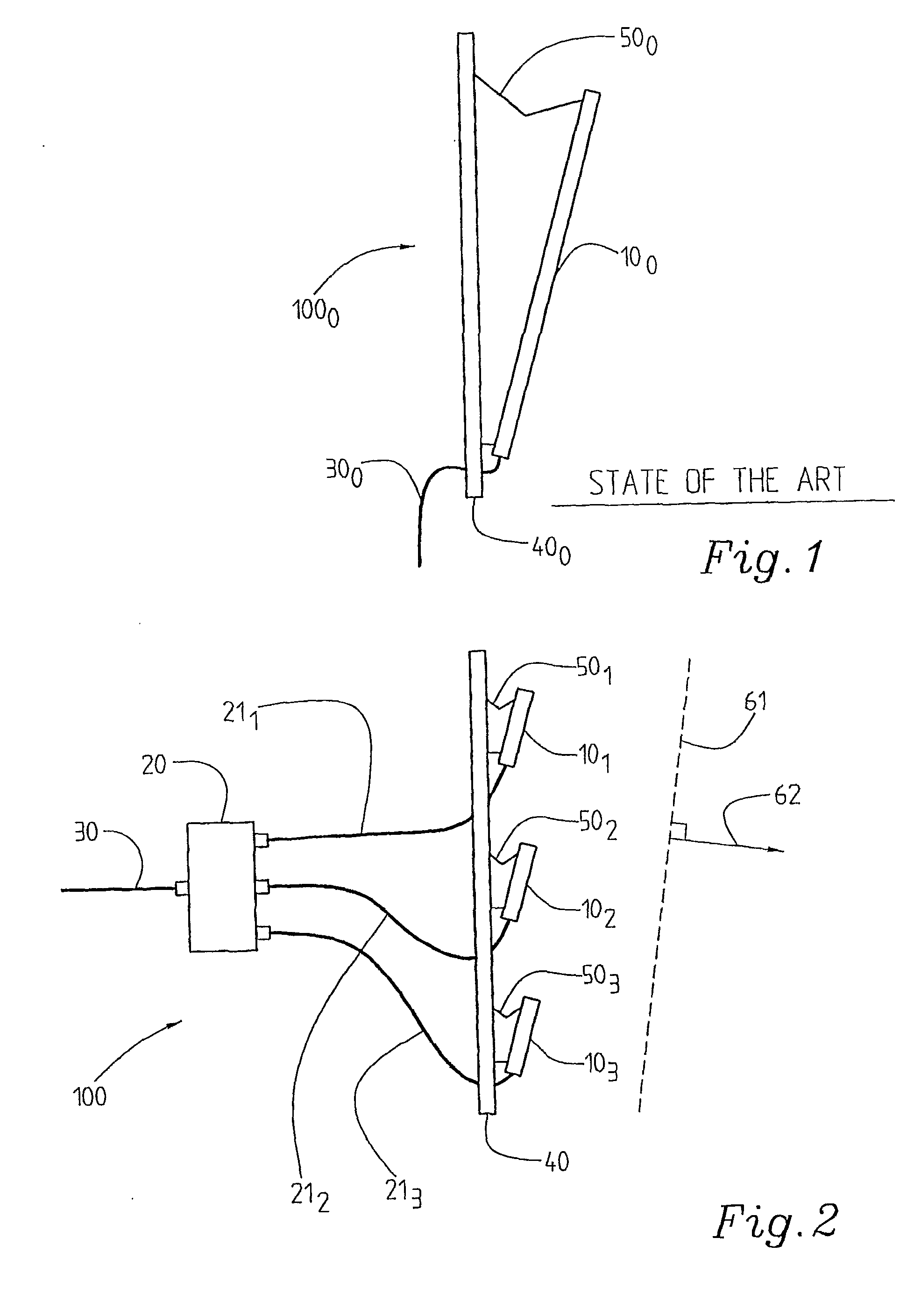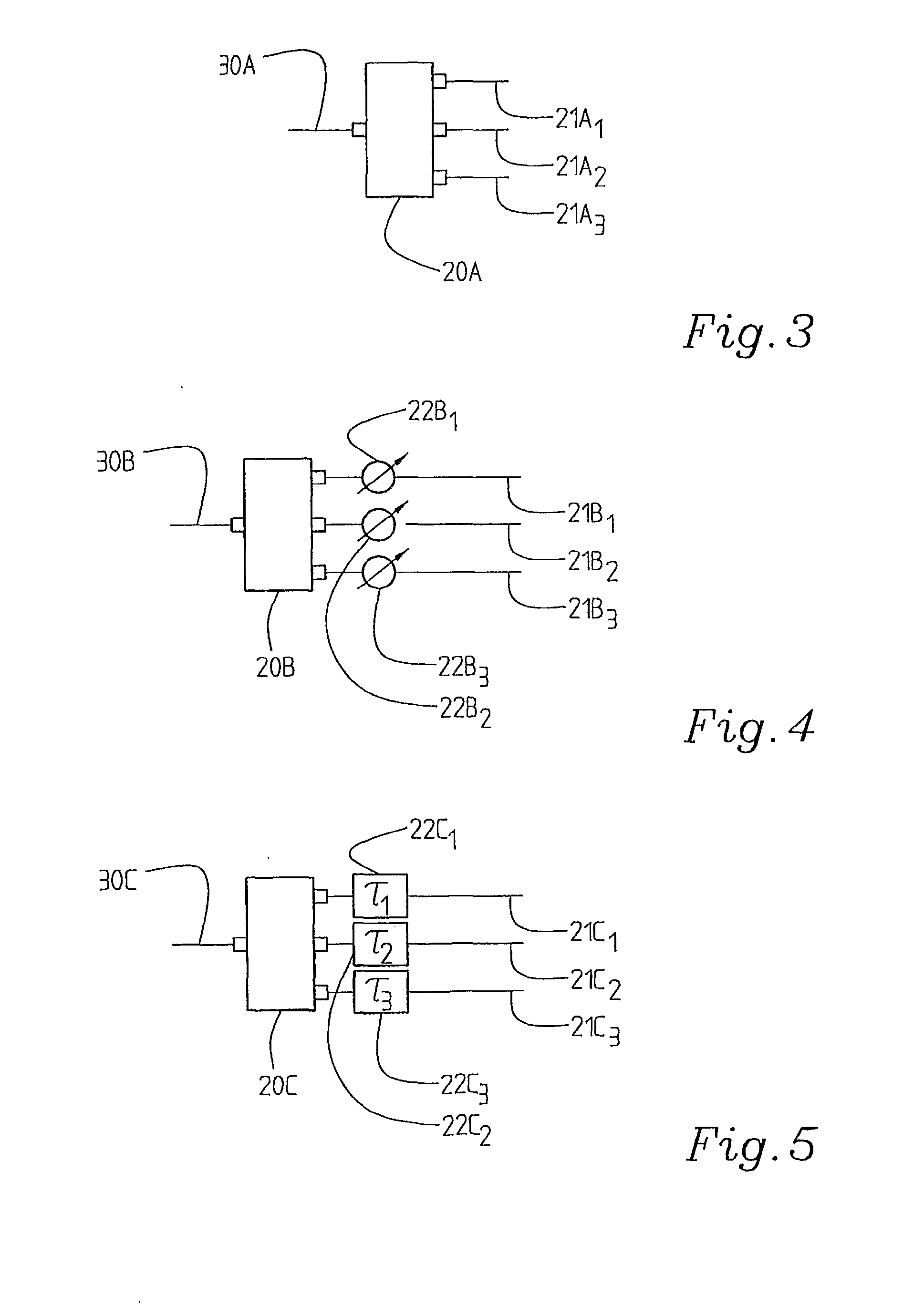Antenna Arrangement And A Method Relating Thereto
a technology of antenna and arrangement, applied in the direction of antenna details, space-fed arrays, antennas, etc., can solve the problems of time-consuming and expensive installation, long antennas, and long antennas, and achieve the effect of convenient fabrication or installation, convenient transportation, and convenient transportation
- Summary
- Abstract
- Description
- Claims
- Application Information
AI Technical Summary
Benefits of technology
Problems solved by technology
Method used
Image
Examples
Embodiment Construction
[0049]For the further understanding of the document, the terminology that is used will be briefly explained. An antenna element here designates an individual radiating element; mostly however, the term radiating element is used in the present document. A sub-array here means a group of antenna elements, i.e. radiating elements, which are arranged in such a way that they have a certain relation to each other. They are typically located on a straight line with equal or unequal spacing between respective antenna elements or radiating elements. An antenna section is a physical unit. It may for example be an off-the-shelf antenna or an antenna section fabricated specially for the purpose of providing a multi-section antenna. The antenna section may generate one or more beams, for example a dual polarized antenna. Particularly there is one RF-connector per beam. An antenna section may be a commercially available antenna, for example a sector antenna with 45°, 60° or 90° beam-width in azim...
PUM
 Login to View More
Login to View More Abstract
Description
Claims
Application Information
 Login to View More
Login to View More - R&D
- Intellectual Property
- Life Sciences
- Materials
- Tech Scout
- Unparalleled Data Quality
- Higher Quality Content
- 60% Fewer Hallucinations
Browse by: Latest US Patents, China's latest patents, Technical Efficacy Thesaurus, Application Domain, Technology Topic, Popular Technical Reports.
© 2025 PatSnap. All rights reserved.Legal|Privacy policy|Modern Slavery Act Transparency Statement|Sitemap|About US| Contact US: help@patsnap.com



